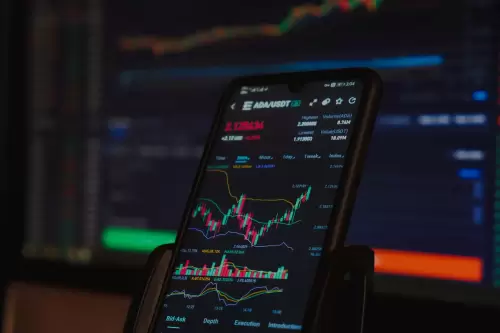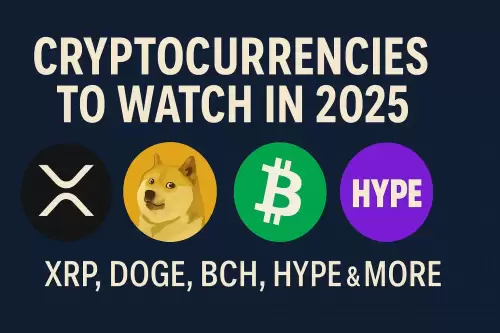 |
|
 |
|
 |
|
 |
|
 |
|
 |
|
 |
|
 |
|
 |
|
 |
|
 |
|
 |
|
 |
|
 |
|
 |
|
他们减少了以太坊主网上的拥塞,在保存安全性的同时降低了汽油费。

Layer 2s have been a great blockchain success story. They’ve reduced congestion on the Ethereum mainnet, driving down gas fees while preserving security.
第2层是一个很好的区块链成功故事。他们减少了以太坊主网上的拥塞,在保存安全性的同时降低了汽油费。
But maybe they’ve become too successful, drawing chain activity and fee income from the parent that spawned them? At least that’s what some are suggesting lately, most recently at Cornell Tech’s blockchain conference in late April.
但是,也许他们变得太成功了,从催生他们的父母那里吸引了连锁活动和收费收入?至少这是一些最近的建议,最近一次是在4月下旬的康奈尔理工大学的区块链会议上。
Indeed, some think Ethereum should be a little greedier, or at least fight harder for a bigger part of the revenue pie, particularly sequencing fees.
确实,有些人认为以太坊应该有点贪婪,或者至少要为更大的收入派,尤其是测序费用而努力。
“People in the Ethereum Foundation [the nonprofit that supports the Ethereum ecosystem] will tell you that, ‘Yes, we effed up by being too ivory tower.’ I have heard that multiple times,” said David Hoffman, an owner at Bankless, during a panel discussion at the Cornell Tech event in New York City on April 25.
“以太坊基金会(支持以太坊生态系统的非营利组织)中的人们会告诉你,'是的,我们通过过于象牙塔而效率。'我听说过多次。
Elsewhere, Hoffman has urged Ethereum to make a “strategic pivot,” noting that the crypto environment has changed in the last few years. Ethereum no longer has the “luxury of being a peace-time research project…. exploited by its competition.”
在其他地方,霍夫曼(Hoffman)敦促以太坊制作一个“战略枢纽”,并指出加密环境在过去几年中发生了变化。以太坊不再具有“成为和平时期研究项目的奢侈……。
L2s are reaping millions of dollars in transaction order fees (sometimes called sequencing fees), but none of these revenues are being passed on to Ethereum, according to James Beck, head of growth at ENS Labs and another speaker at the New York City conference. Beck told Cointelegraph:In short, Ethereum is a neutral verification layer, but the Ethereum mainnet is not being fairly compensated for the work that it is doing. Centralized for-profit L2s like Base, Optimism and Arbitrum are gathering the lucrative sequencing fees while enjoying the security and liveness guarantees of the Ethereum mainnet at relatively little economic cost.
ENS Labs的增长负责人詹姆斯·贝克(James Beck)表示,L2S正在收获数百万美元的交易订单费(有时称为测序费用),但这些收入均未传递给以太坊。贝克告诉Cointelegraph:简而言之,以太坊是一个中性的验证层,但是以太坊的主网并未对其所做的工作得到相当大的补偿。基础,乐观和仲裁等集中的营利性L2正在收集利润丰厚的测序费用,同时以相对较少的经济成本享受以太坊主网的安全性和livesice保证。
L2s soared after Dencun upgrade
L2S在Dencun升级后飙升
L2 rollups are a recent innovation; they only emerged in 2023. The idea was to reduce chain congestion and gas fees by moving transaction processing from the main blockchain (layer 1) to separate chains that sit atop the mainnet (L2s). But transaction processing is arguably the most profitable part of the revenue game, especially when users opt to pay priority fees to get their orders processed faster.
L2汇总是最近的创新。它们仅在2023年出现。这个想法是通过将交易处理从主要区块链(第1层)移动到位于主网(L2S)上的链条来减少链充血和汽油费。但是,交易处理可以说是收入游戏中最有利可图的部分,尤其是当用户选择支付优先费以更快地处理订单时。
However, on a relative basis, at least, few people seem to be caring much about the priority fee portion of the revenue mix.
但是,相对基础,至少很少有人在关心收入组合的优先费用部分。
At any rate, it’s no secret that L2s are doing well on the fee front. In fact, they’ve become so successful that they're now largely handling the bulk of the activity on Ethereum.
无论如何,L2在费用方面表现良好并不是什么秘密。实际上,它们变得如此成功,以至于他们现在在很大程度上处理了以太坊的大部分活动。
After March 2024's Dencun upgrade introduced blob transactions to help scale L2s, they were able to move quickly and began generating significant volumes, while layer 1 activity remained relatively low.
2024年3月之后,Dencun升级引入了BLOB交易以帮助缩放L2,它们能够迅速移动并开始产生大量卷,而第1层活动仍然相对较低。
As a result, on Monday, April 8, at least one major L2, Coinbase’s Base, appears to have been largely scooping up the priority transaction fees, which are accruing to L2s in a lopsided manner, according to blockchain data and analysis from CoinMetrics.
结果,在4月8日星期一,根据区块链数据和共同分析,至少有一个Coinbase的基础,Coinbase的基础似乎在很大程度上是在很大程度上sc起优先交易费用,这些交易费用以偏斜的方式逐渐降低。
In total, Base has earned an estimated $98 million in revenues from user-transaction fees (including base and priority fees), while paying about $4.9 million to the Ethereum base layer, leading to a total estimated profit of $94 million since the Dencun upgrade, according to CoinMetrics researcher analyst Tanay Ved.
根据COINMETRICS研究员分析师分析师Tanay分析师Tanay分析师Tanay Ved,Base总共获得了从用户交易费用(包括基本和优先费用)中获得的9800万美元收入,同时向以太坊基础层支付了约490万美元,自从Dencun升级以来,估计的估计利润为9400万美元。
Of this sum, approximately $90.4 million can be attributed to transaction-order (or sequencing) fees, highlighting the substantial profits being generated by L2s through this revenue stream, while a smaller portion comes from state-transition (or blob) transaction fees, which are also flowing to L2s.
在这笔款项中,大约90040万美元可以归因于事务订单(或测序)费用,从而强调了L2S通过此收入流产生的大量利润,而较小的部分来自国家转换(或BLOB)交易费用,这些费用也流向L2S。
Base’s response
基地的回应
Asked about the lopsided nature of the fee split, a Base spokesperson said: “Today, Base already pays Ethereum fees for every transaction on Base. All transactions are settled on Ethereum, and so far, Base has paid Ethereum more than $20 million in settlement fees since Base’s creation.” One can see these fees on Token Terminal under “cost of revenue,” the spokesperson added.
当被问及费用分配的偏见性质时,一位基本发言人说:“今天,基地已经为基础上的每笔交易支付以太坊费用。所有交易都定居在以太坊上,到目前为止,基地自从基地创造以来,基地已经支付了以太坊超过2000万美元的和解费。”发言人补充说,在“收入成本”下,可以在令牌终端上看到这些费用。
“Overall, Base is making getting onchain more accessible with fast and cheap transactions and helping grow the Ethereum ecosystem by onboarding more users, builders, apps and assets, all of whom are transacting in ETH and driving demand,” said the spokesperson.
该发言人说:“总体而言,基地通过快速和廉价的交易使Onchain更容易获得,并通过攻入更多的用户,建筑商,应用程序和资产来帮助发展以太坊生态系统,所有这些人都在ETH和驱动需求中进行交易。”
However, in many, if not most months, Base’s overall transaction fees are roughly 10 times the amount paid to Ethereum for settling trades, according to examination of the referenced Base financial statement. In April, for instance, the most recent full month, Base reaped $3.7 million in transaction fees, but only $305,000 was delivered to Ethereum as settlement fees — about 8% of total fees.
但是,根据参考基本财务报表的审查,在许多(即使不是大多数月份)中,Base的整体交易费用大约是以太坊支付给以太坊的10倍。例如,在4月,最近的整个月,基地收获了370万美元的交易费用,但作为结算费,只有305,000美元交付给以太坊,约占总费用的8%。
Still, maybe things aren't quite so dire. Even if the calculus of the fees is out of kilter now, the imbalance may not last, others caution. Ethereum hard forks
不过,也许事情并不那么可怕。即使费用的演算现在已经超出了Kilter,其他不平衡也可能不会持续,其他人则警告。以太坊硬叉
免责声明:info@kdj.com
所提供的信息并非交易建议。根据本文提供的信息进行的任何投资,kdj.com不承担任何责任。加密货币具有高波动性,强烈建议您深入研究后,谨慎投资!
如您认为本网站上使用的内容侵犯了您的版权,请立即联系我们(info@kdj.com),我们将及时删除。
-

- 虚拟每周下降:恢复分析和隐私推动
- 2025-07-26 07:00:19
- 分析Virtual最近的斗争以及UIDAI促进虚拟ID来增强隐私的推动力。
-

-

- 加密货币,前十名,第30周:山寨币趋势趋势
- 2025-07-26 06:02:52
- 比特币合并时,请发现第30周的前十名加密货币从Conflux到Litecoin,以及为什么他们在市场上引起轰动。
-

-

- 2025年的XRP:公牛跑还是胸围?
- 2025-07-26 05:55:12
- 在监管清晰度和市场趋势中,分析XRP的潜力。会激增还是淡出?
-

- Ruvi AI预售升温:早期投资者注视着巨大的收益
- 2025-07-26 05:51:25
- Ruvi AI的预售即将结束,为早期投资者提供了潜在的重大回报。战略合作伙伴关系和现实应用程序引起了利益。
-

- 加密立法,区块链招聘和共同插入应用程序:一个新时代?
- 2025-07-26 05:48:39
- 分析加密立法对区块链招聘和共同插入应用的影响,突出了关键趋势和见解。
-

-





























































